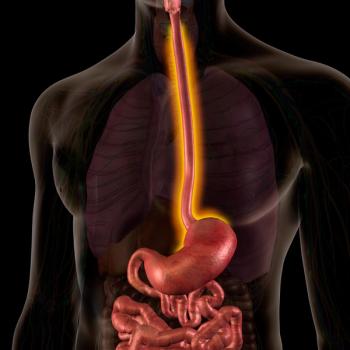
- Managed Healthcare Executive February 2019 Issue
- Volume 29
- Issue 2
The Impact of Big Data on Medical Decisions
Evidence-based decisions can help guide end-of-life care.
End-of-life decisions are inherently difficult for all concerned. Fortunately for healthcare providers, and in turn the patients they serve, increasingly robust options offer support for data-driven decisions.
Clinical technology and data analytics have tremendous potential to overcome the obstacles to effective end-of-life care, according to Srinivasa Vegi, PhD, Bethesda, Maryland-based president of data analytics and artificial intelligence for IT services provider
Related article:
“Not only will these tools help doctors and patients determine whether treatment is the best course of action, but they also help to better identify appropriate patients for palliative intervention as part of their end-of-life care,” he says. “Moreover, clinical tools and analytics can help to reduce the length of stay for palliative care patients and decrease costs whether or not treatment is sought.
In fact, data analytics-particularly machine learning solutions that use big data-are radically transforming how physicians deal with palliative care, says Sapan Desai, MD, PhD, MBA, a Chicago-based vascular surgeon and CEO of
Desai says that data analytics will change how physicians approach end-of-life care. Not only can machine learning and artificial intelligence pinpoint the causes for death, but depending on how the algorithm is set up, it can even make calculations regarding which of those causes will impact the quality of life the most.
“Good analytics can help direct the conversation with a patient by targeting specific medical problems and the projected efficacy of treatment,” he says. “It can help them understand, and come to terms with, how their quality of life will look in the near future.
For example, Desai describes an 83-year-old patient who has moderate kidney disease, poor leg circulation, and heart failure.
“Machine learning may tell me that he is likely to suffer kidney failure leading to dialysis if I do any major intervention for his circulation problems,” Desai says. “Armed with this information, my discussion with the patient may guide him toward palliative care rather than spending his last few months on dialysis, separated from his family.”
Strong argument
One of the strongest arguments for the use of data analytics in this area is improved efficiency.
“Machine learning and data science can help make end-of-life care services more efficient and accessible,” says Gabriel Bianconi, founder of
Bianconi says that machine learning could help patients and professionals make more informed decisions. “For example, the tools can help give more accurate estimates of survival rates and times for different interventions,” he says. “With this information, both parties can better make a decision and plan accordingly.”
In addition, machine learning could in theory be leveraged to make more accurate end-of-life predictions, Bianconi says. He points that hybrid approaches have already outperformed healthcare professionals on a number of diagnostics tasks, and a similar approach could be applied to end-of-life situations.
Related article:
At the same time, these tools have the potential to give insights that are tailored specifically for the patient. Instead of giving general information about survival rates, for example, a data-driven approach could leverage the patient's medical history, and other personal data, to give more accurate survival rate predictions for different treatments or conditions, according to Bianconi.
Real-world applications
Such applications have moved beyond the theoretical to significant real-world applications.
With better communication about advanced illness care options and end-of-life planning, physicians have the potential to make significant improvements in healthcare access, utilization, cost and outcomes, says Brentwood, Tennessee-based Kurt Merkelz, MD, senior vice president and chief medical officer of
Related article:
“An informed discussion occurs when information is fully disclosed, a patient’s values, beliefs, and preferences are top of mind and a recommendation is made based on an accurate estimation of a patient’s prognosis,” Merkelz says. “However, a lack of quality prognostic markers is a potential barrier to fruitful shared decision making.”
Thanks to advances in analytics, a productive way to address this gap is to use electronic medical record data extraction and improved predictive analytics to estimate probability outcomes. According to Merkelz, past algorithms have utilized non-clinical data and manually extracted data for calculations, limiting their usefulness. Enhanced data analytics, on the other hand, offer the opportunity to better identify patients who are at risk for hospitalization and offer other insights into a patient’s care needs.
“This allows patients to better plan for the type of care they would like to receive throughout their health care continuum,” he says. “Having these important goals of care conversations with patients helps them access beneficial services like home health, skilled therapy, and hospice and reduce unwanted hospitalizations, procedures and treatments, creating a better quality of life for them and their families.”
A sobering fact is that 75% of patients are unable to make some or all decisions at end of life, according to Amy Berman, RN, a senior program officer with the John A. Hartford Foundation.
“Data analytics offer the possibility of better supporting advance care planning and goal-concordant care by identifying populations at greater mortality risk at a point when advance care planning can be initiated or decisions can be reviewed,” Berman says.
In addition to helping address the concerns of individual patients, these tools offer potential for positive change on a large-scale basis.
“We can use data analytics to root out disparities around access to palliative care, advance care planning, and the provision of unwanted care,” Berman says. “Data analytics offer the possibility of addressing what matters as our nation ages."
At the same time, another reality is that the potential for such analysis is often misunderstood, says Greg Horne, principal health analytics strategist at software and analytics provider
“This is one of those mine fields where people are afraid that computers will one day decide whether you get to live or die,” he says. “That’s a gross mischaracterization, of course, but a real fear for many.” He says that those who express such worries are putting the emphasis in the wrong place. The real potential is not about the data or analytics but how data and analytics can inform the real human decisions that happen around end of life.
“Doctors, patients, and families are often forced to make end-of-life decisions based on limited knowledge, guided more by gut reactions than actual evidence,” Horne says. He suggests instead imagining an artificial intelligence-based decision support system that helps these key stakeholders understand potential options and the likely outcomes associated with each.
Related article:
Horne notes that given all the complexities involved, the primary opportunity is in the centralization and aggregation of all relevant data. Then insights extracted from that data available can be provided to key decision makers via customizable reports and dashboards.
“Effectively, analytics could provide the framework for an end-of-life care workflow and related care management coordination,” he says. Aggregated historical data could serve as a means for using analytic approaches to develop dynamic, patient-specific guidelines for recommended “paths of care.” At the same time, cost/expense insights could help guide both administrative considerations and patient and family decision-making.
Despite the advantages offered by data analytics, its application can also generate unanticipated levels of complexity. While a strength of many tools is their capacity for streamlining the process of reviewing and interpreting large volumes of information, it still takes time for healthcare providers to absorb relevant details and translate them into terms that can be readily understood by patients and their families.
Consider the challenges
Indeed, the basic functions of collecting and sharing data may generate some challenging situations, according to Manali Patel, MD, assistant professor of oncology at the Stanford University School of Medicine and staff oncologist at the
“We struggle to make decisions easier with the data we have now,” she says. “I’m concerned analytics will provide more information but not knowledge that’s actionable.”
She also poses questions related to ethical concerns. Have patients consented to use of data? Who will have access? Other questions range from insurance considerations to making sure patient’s fundamental concerns are not overshadowed by numbers.
Patel points out that while analytics can support efforts to prevent unnecessary use of acute care, approximately 20% of patients with terminal illnesses would still choose aggressive treatment even if data analysis doesn’t support their decision.
The bottom line is the imperative for applying information in a meaningful way.
“We need to make sure the data we have is going to lead to better patient care,” Patel says. “It’s all about quality care.”
In the future, the medical community can anticipate even more robust capabilities in this area, Vegi predicts.
Related article:
“Data mining algorithms successfully digest and synthesize complex data into usable information for both doctors and patients,” he says. “There’s going to be a big change in the availability of that kind of predictive information in the next few years. More systems need to be developed that can cross reference data to help empower clinicians to have these conversations with patients and their families earlier, when appropriate.”
Currently, algorithmic modeling helps to synthesize and digest complex information into usable chunks to be leveraged by doctors, patients, and families to inform decision making, Vegi says. He adds that risk-scoring based on a patient’s diagnosis, severity, clinical condition, medication, and hospitalization history can help clinicians offer objective data to families about future hospitalizations, as well as decisions to withdraw care. “Though the concept of scoring a patient’s life expectancy based on a numerical figure may not seem optimal, it actually can help doctors and medical staff compare cases to justify treatments and specific care programs,” he says.
While interpreting such numbers may seem like something out of a dreary anti-utopian film, the reality is much more promising.
“Ultimately these remain human decisions, freely chosen by the patient and family, alongside their physician,” Horne says. He notes that exploring options customized to the patient-and rationalized by data related to end-of-life care outcomes and costs-simply provides a better starting point. “Such an evidence-based approach would certainly give families tremendous peace of mind as they face some of life’s most difficult decisions.”
Mark Rowh is a Virginia-based freelance writer whose interest areas include healthcare, business, and higher education.
Articles in this issue
over 6 years ago
Managed Care Technology Survey 2019over 6 years ago
The 4 Biggest New Areas to Focus on in 2019over 6 years ago
The State of Biosimilars in 2019almost 7 years ago
How Three Hospitals Use Predictive Analytics to Reduce Readmissionsalmost 7 years ago
Four Trends Health Execs Need to Follow in 2019almost 7 years ago
Six Healthcare Technologies Coming in the Next 10 Yearsalmost 7 years ago
The Biggest Barrier to Home HealthcareNewsletter
Get the latest industry news, event updates, and more from Managed healthcare Executive.
















































